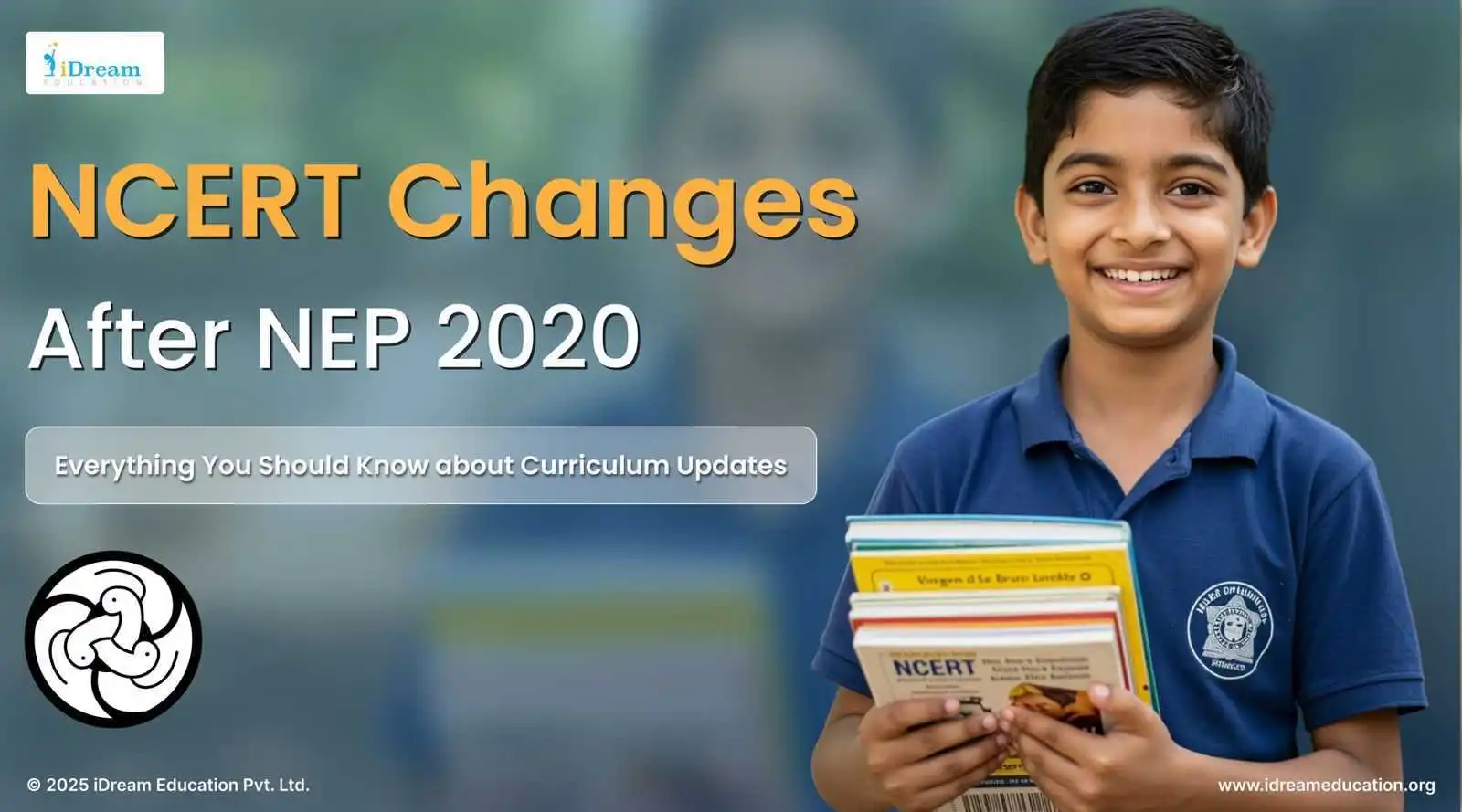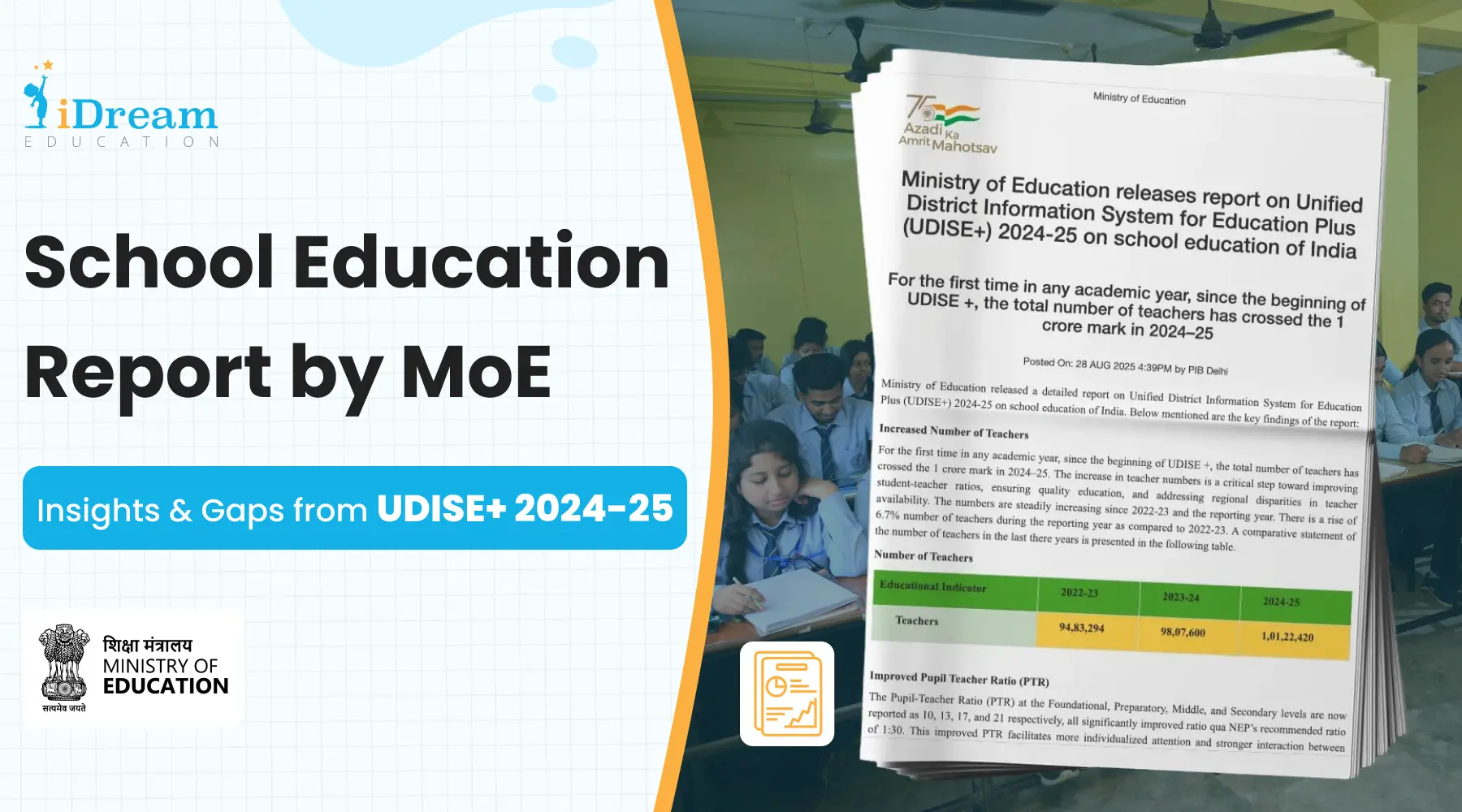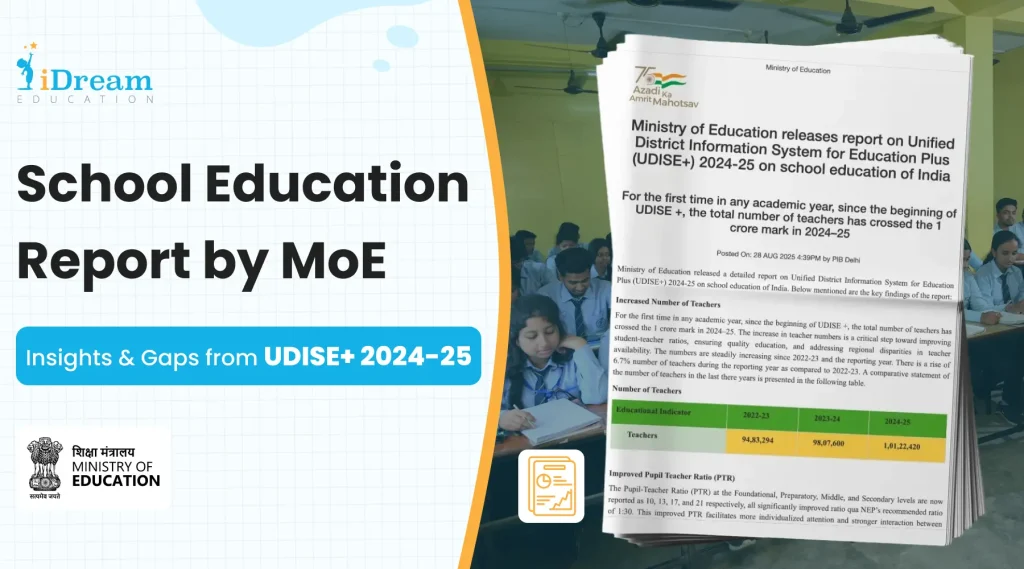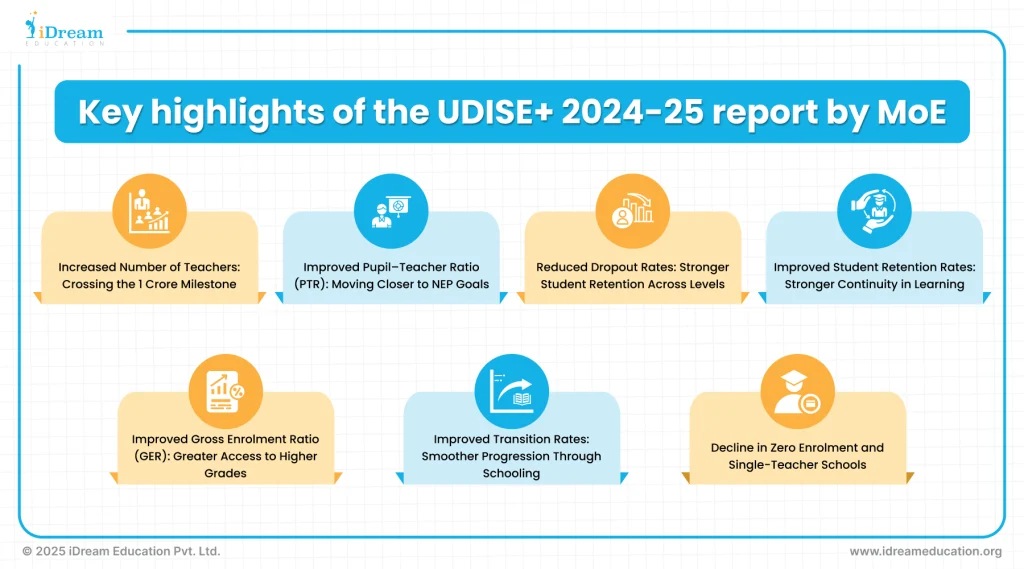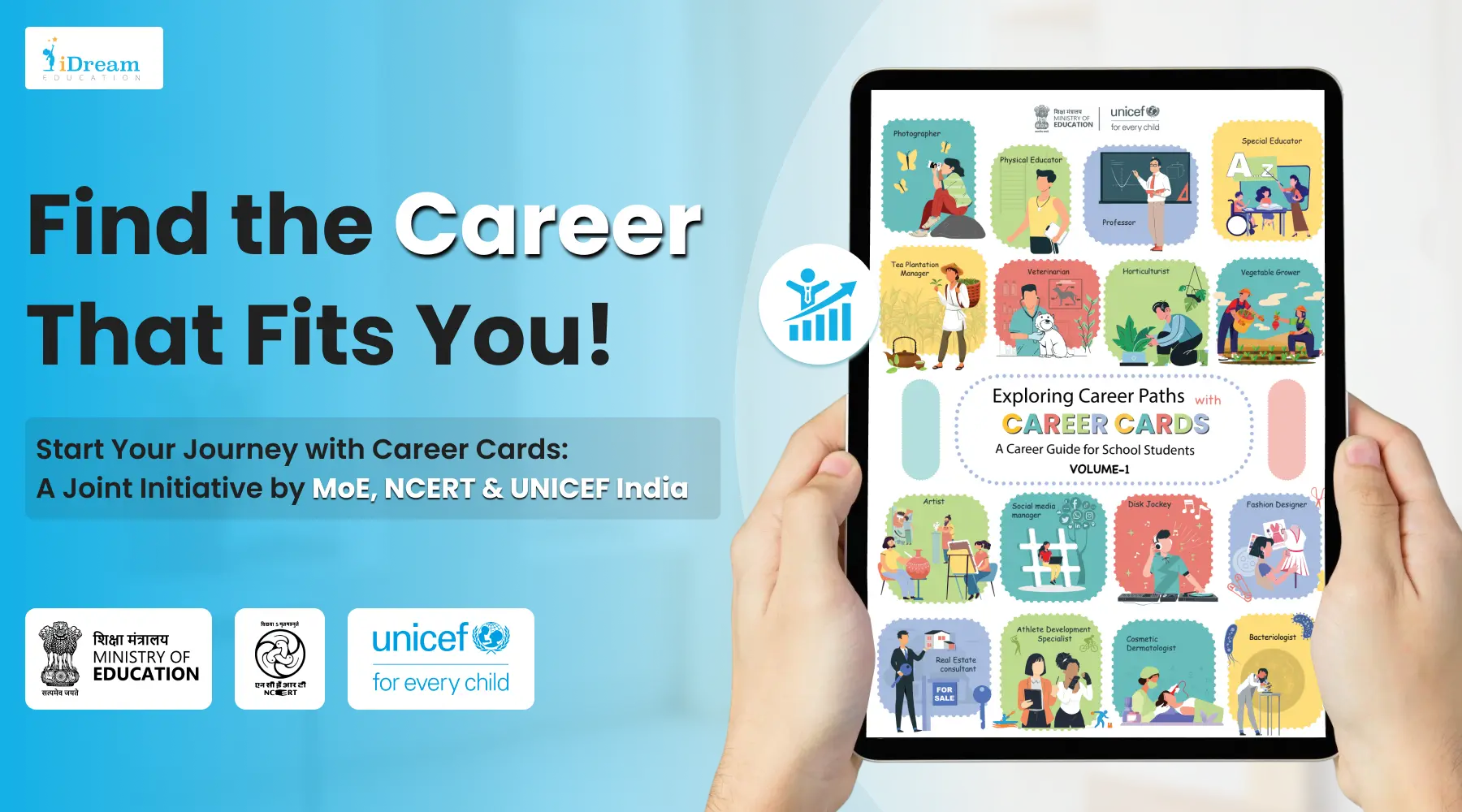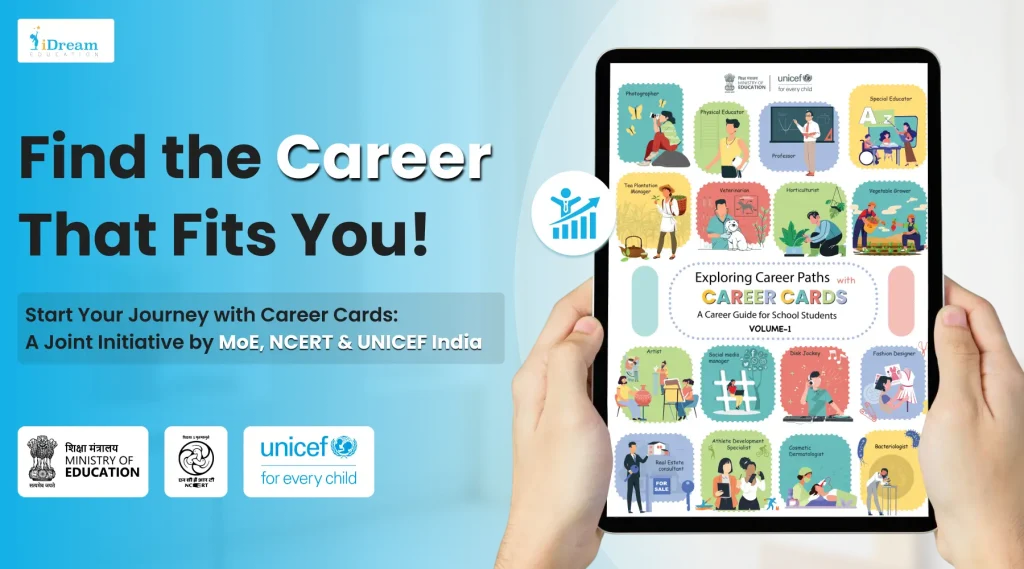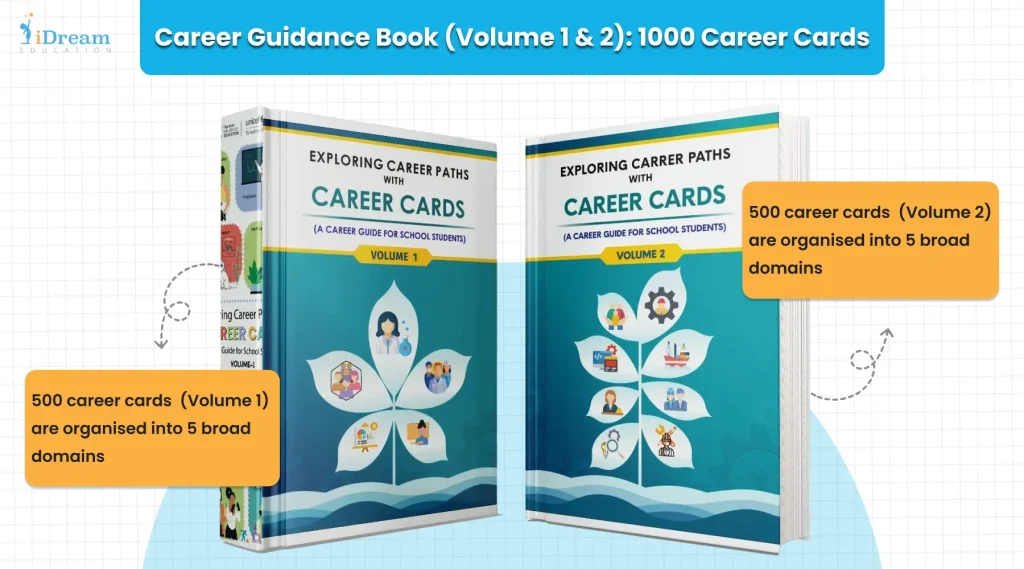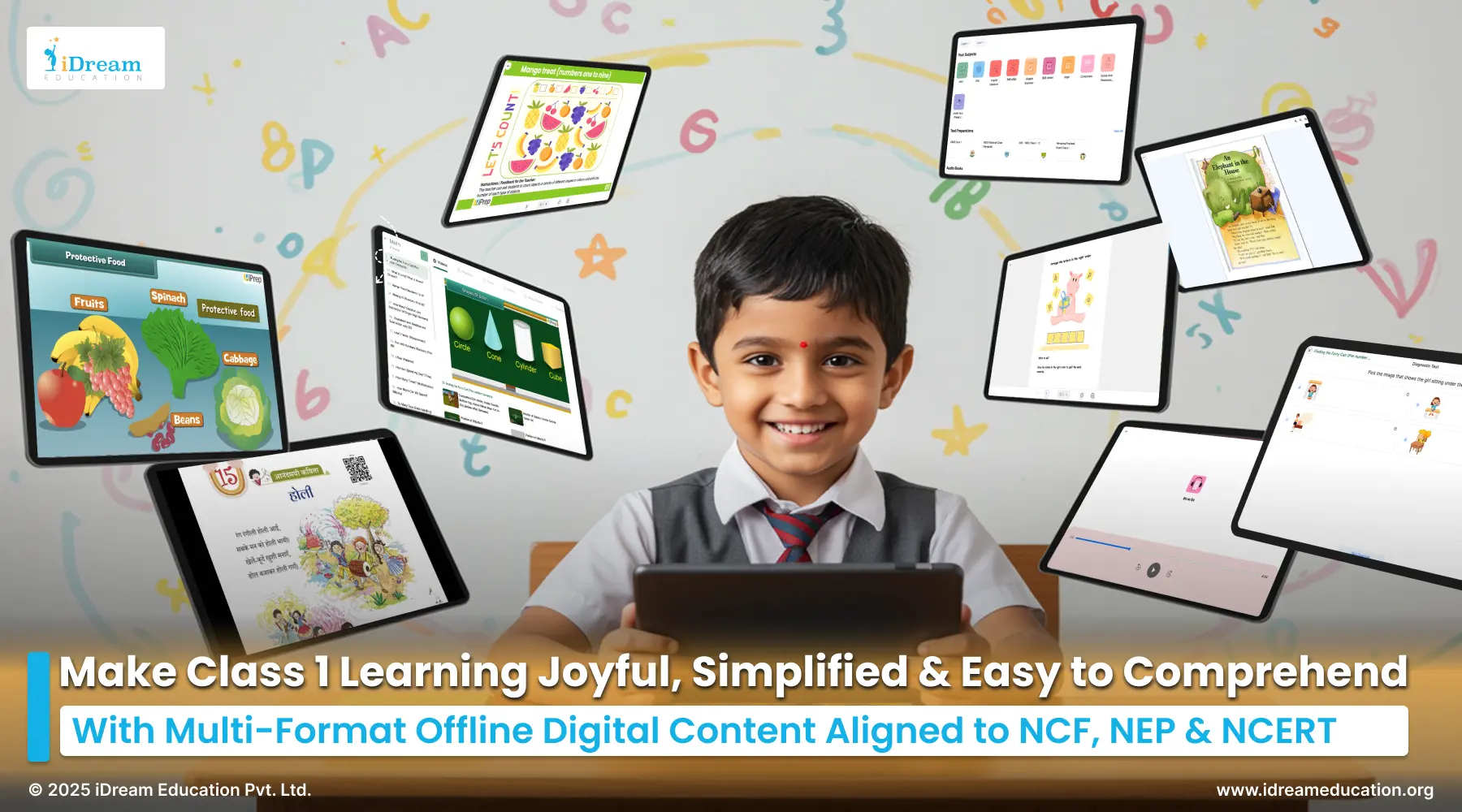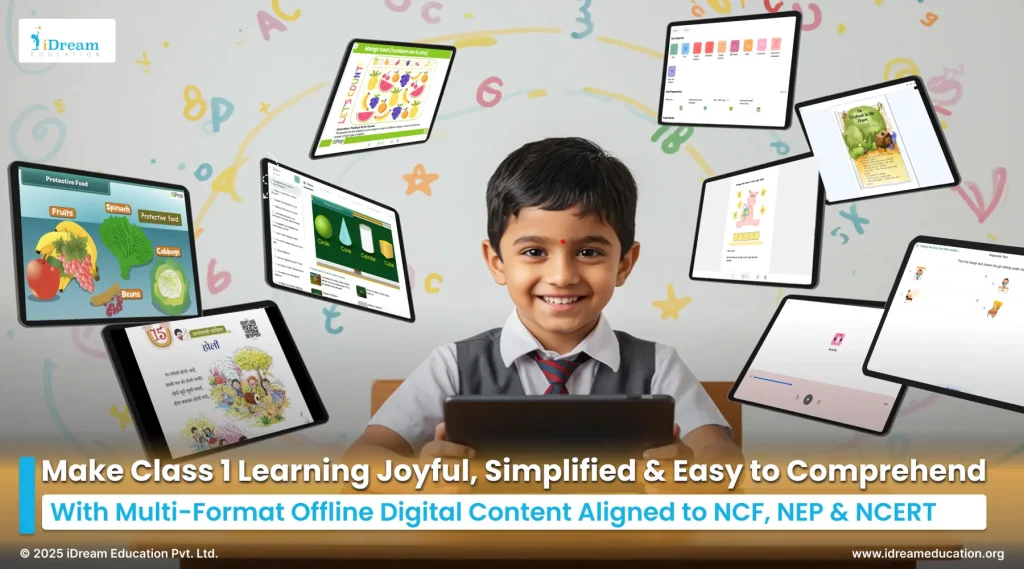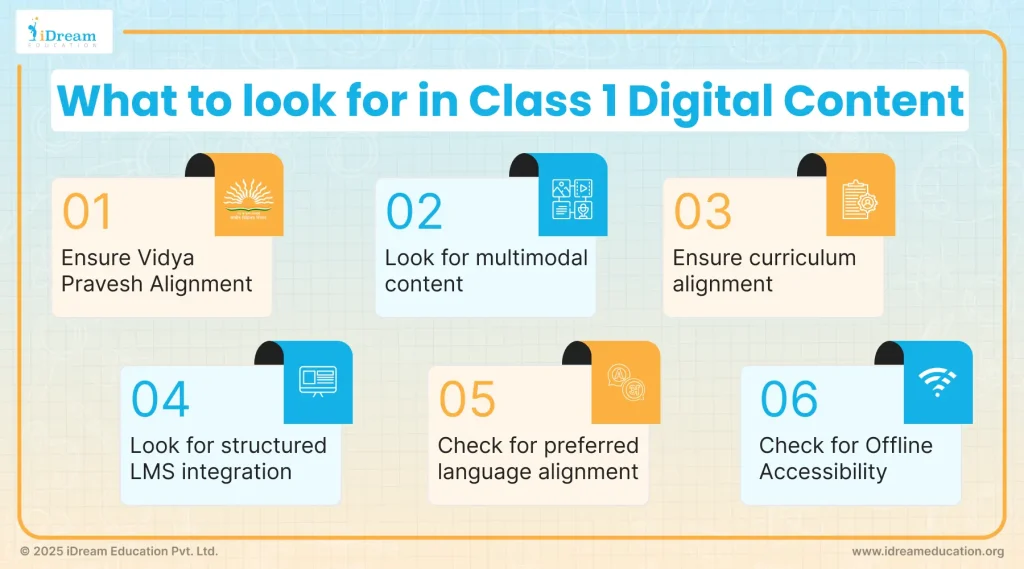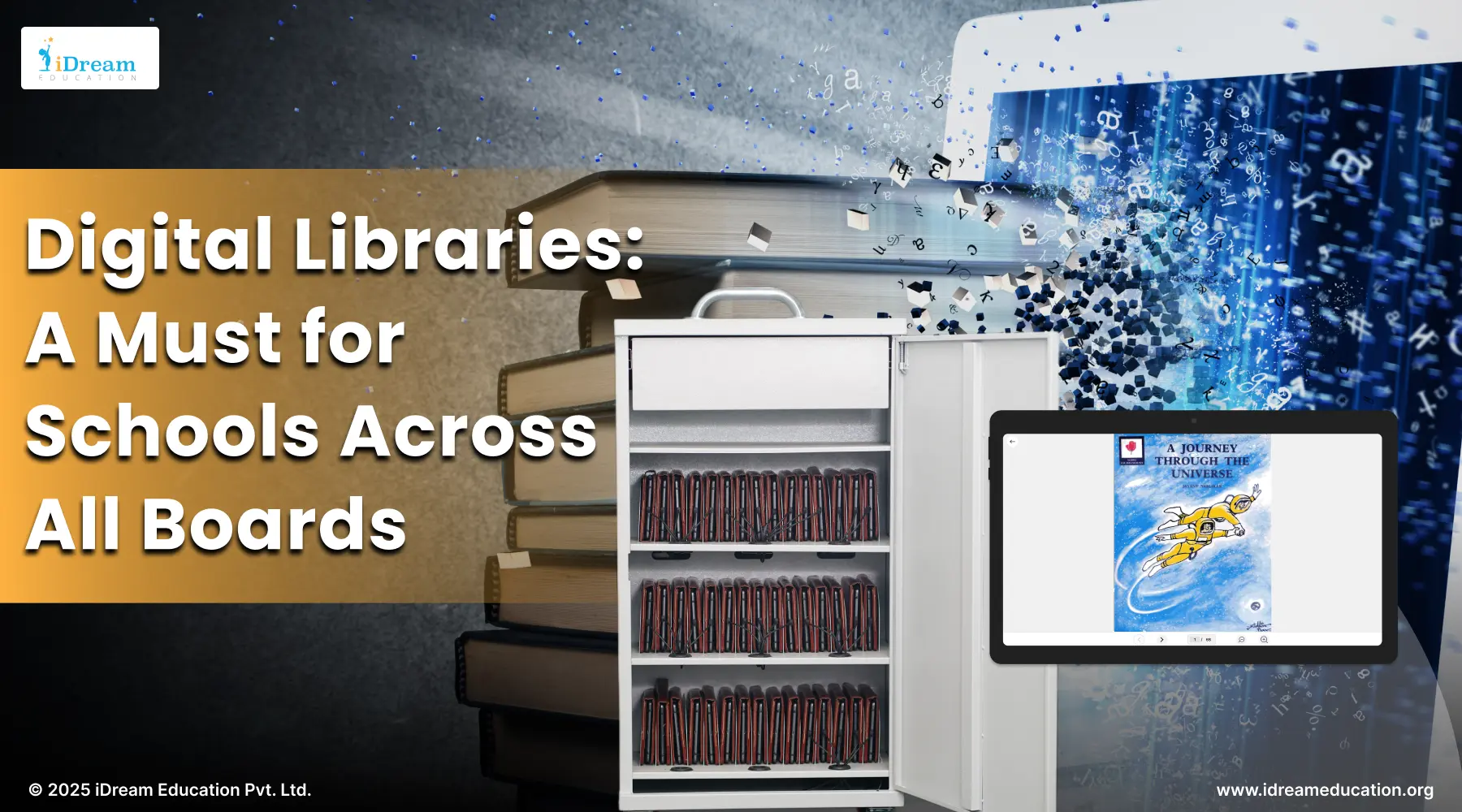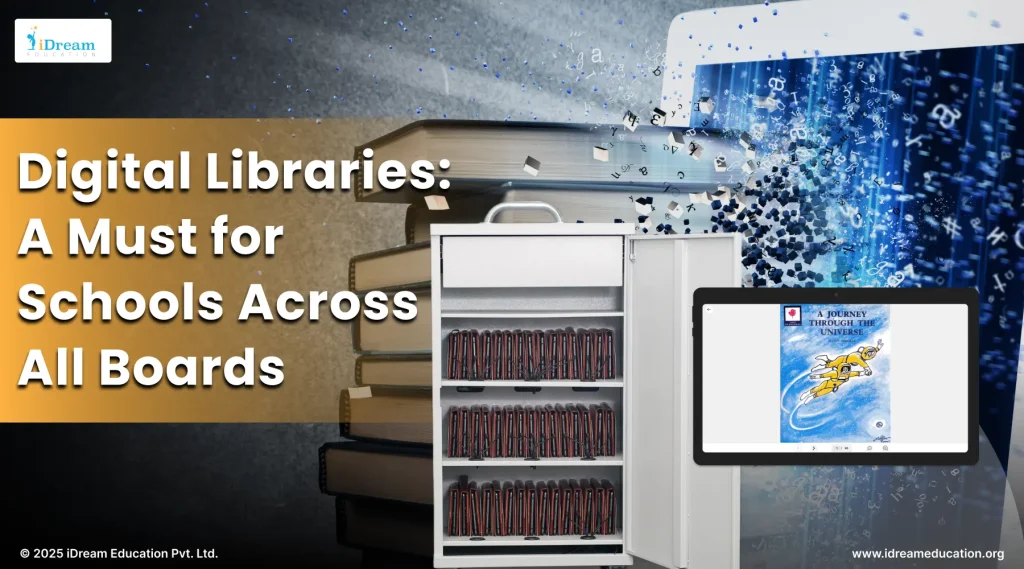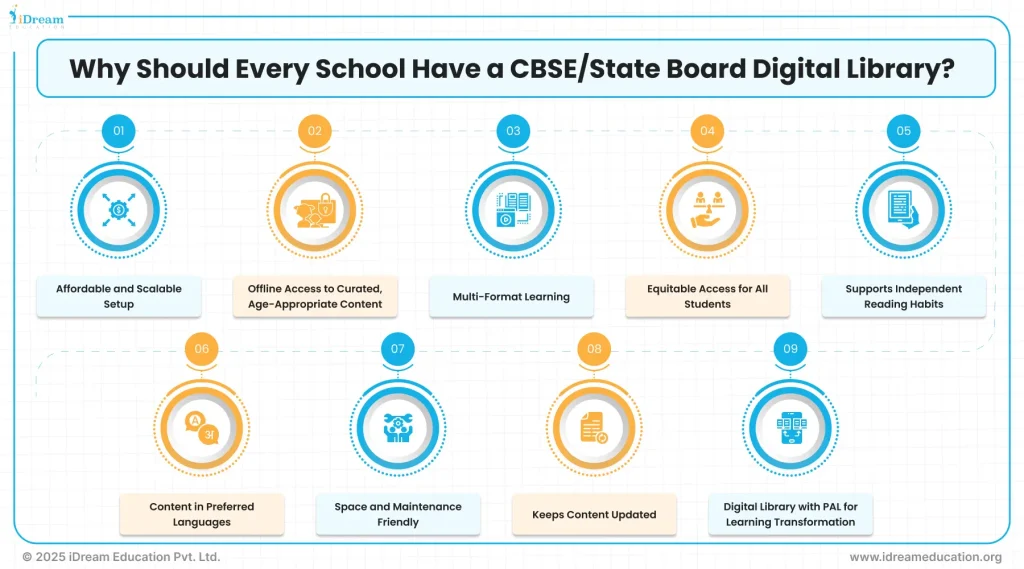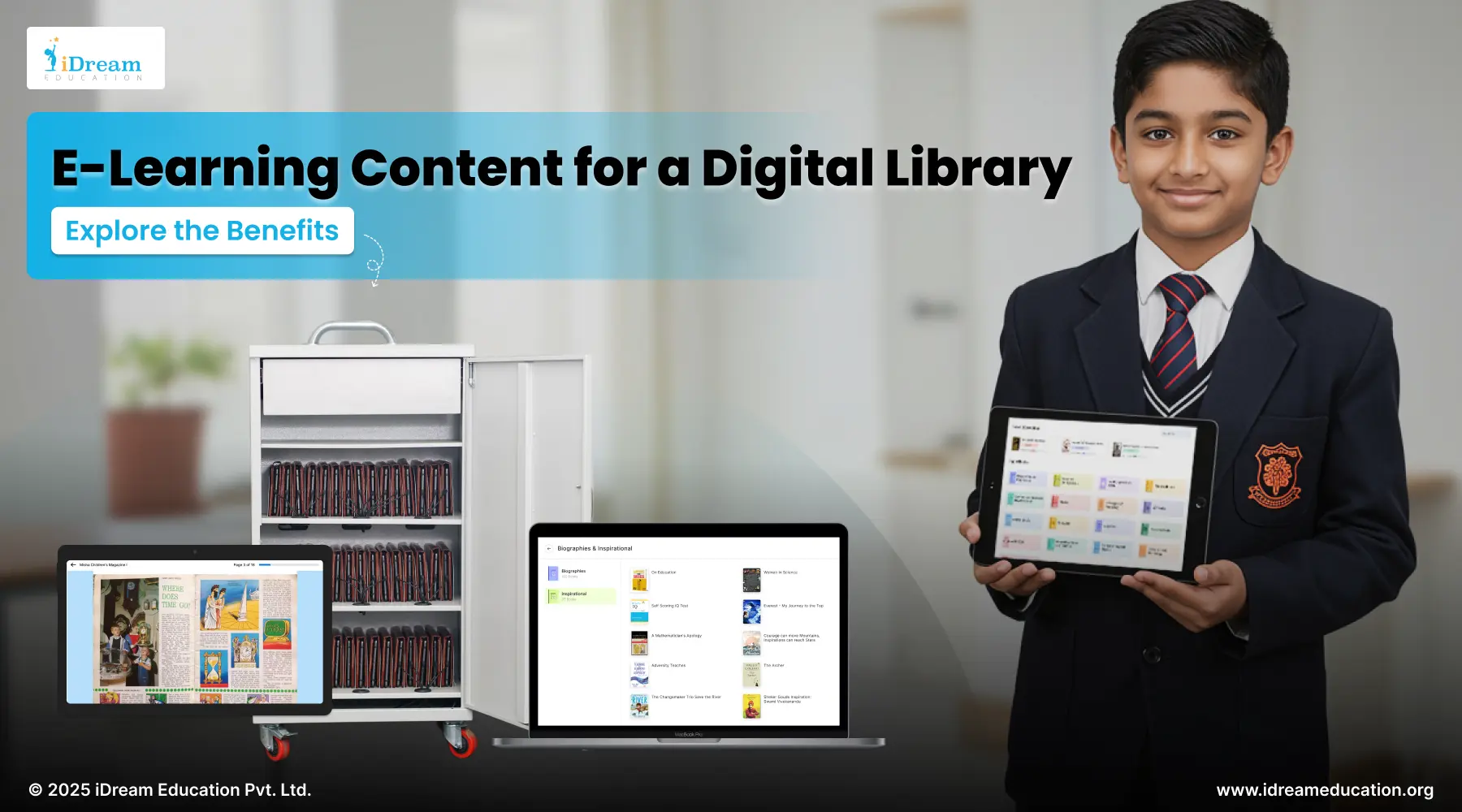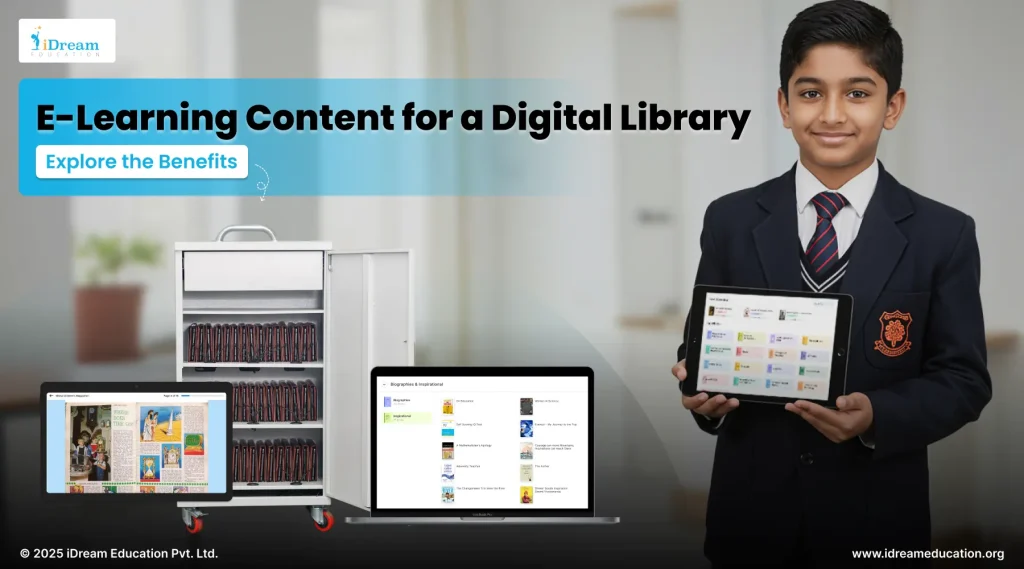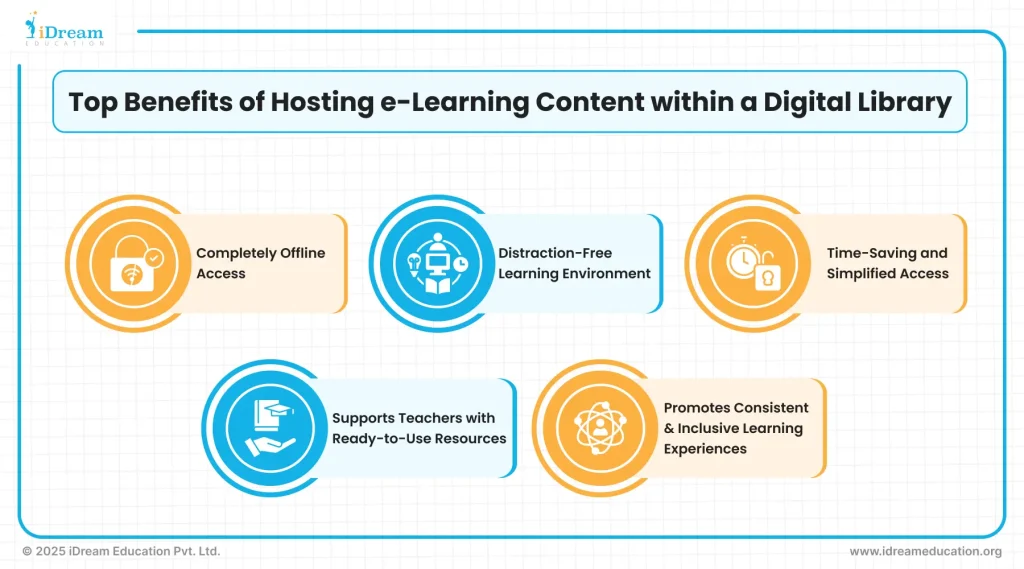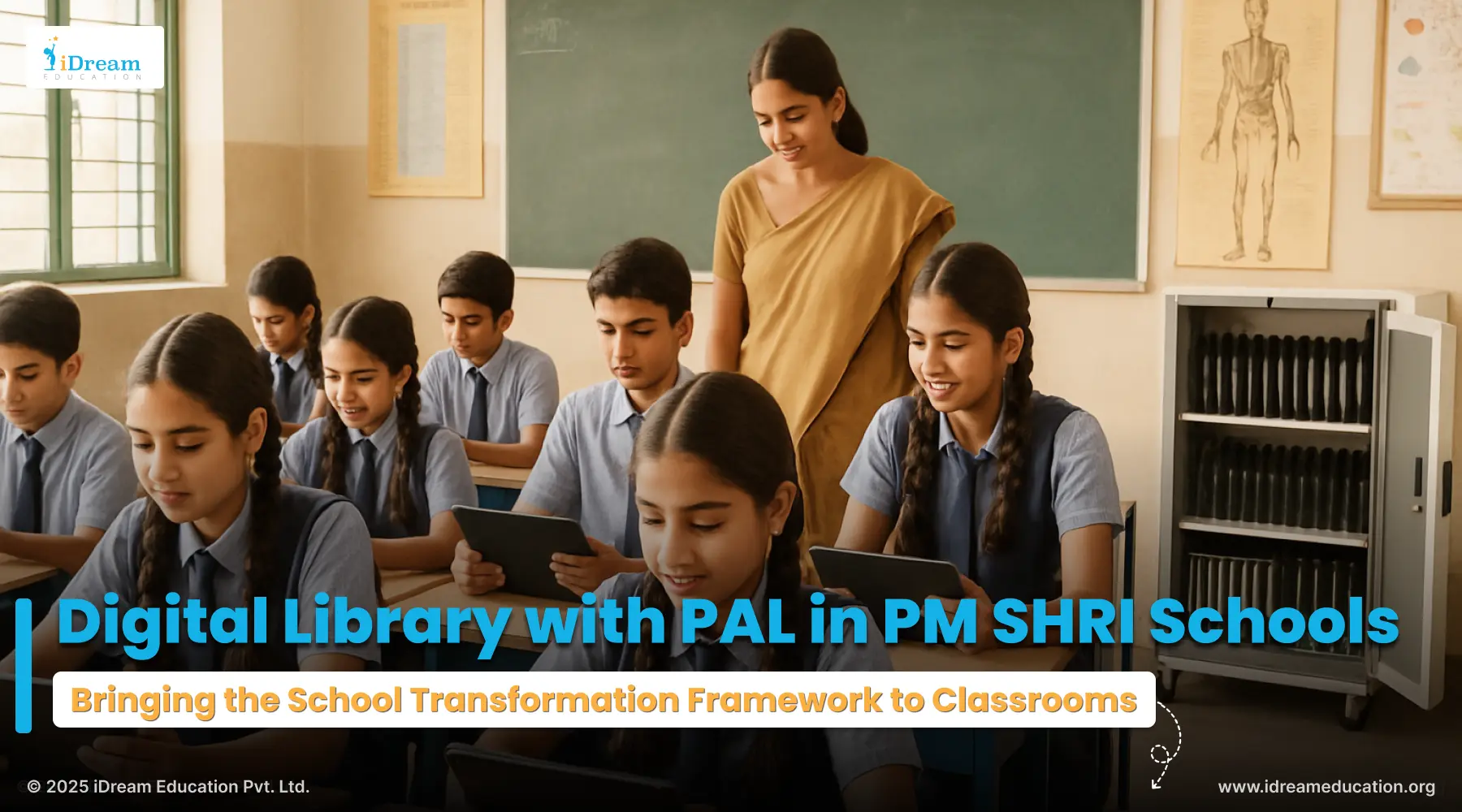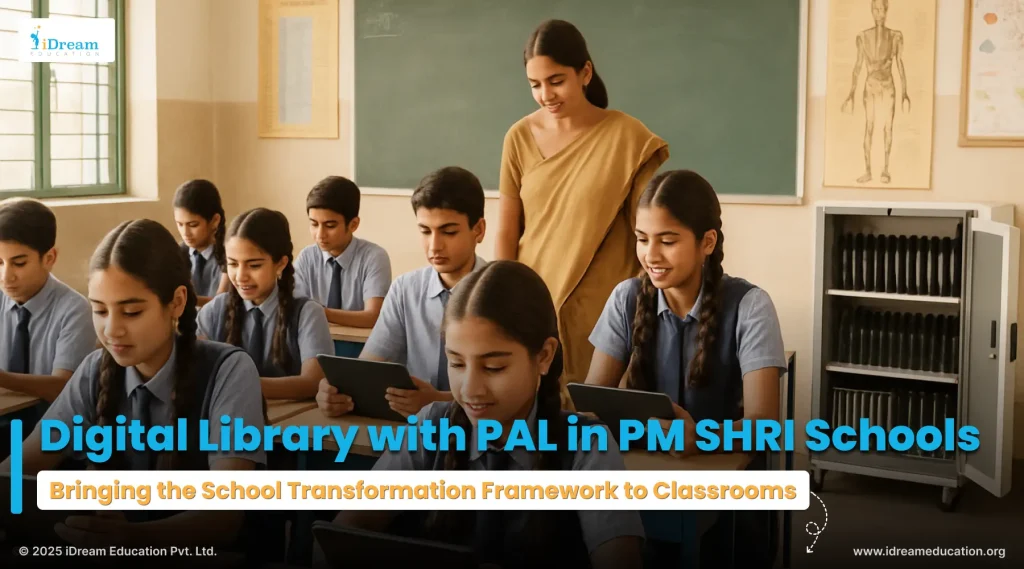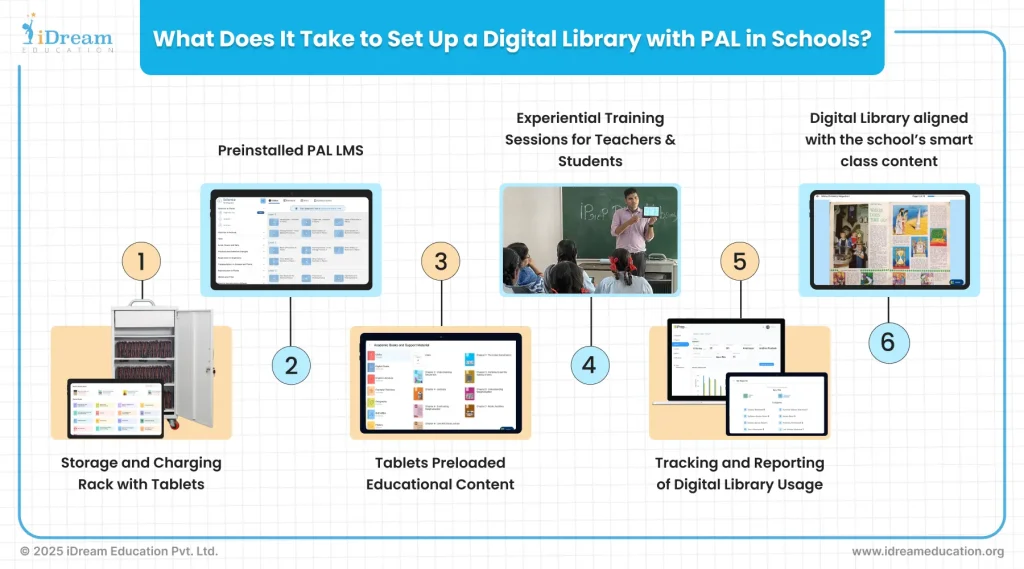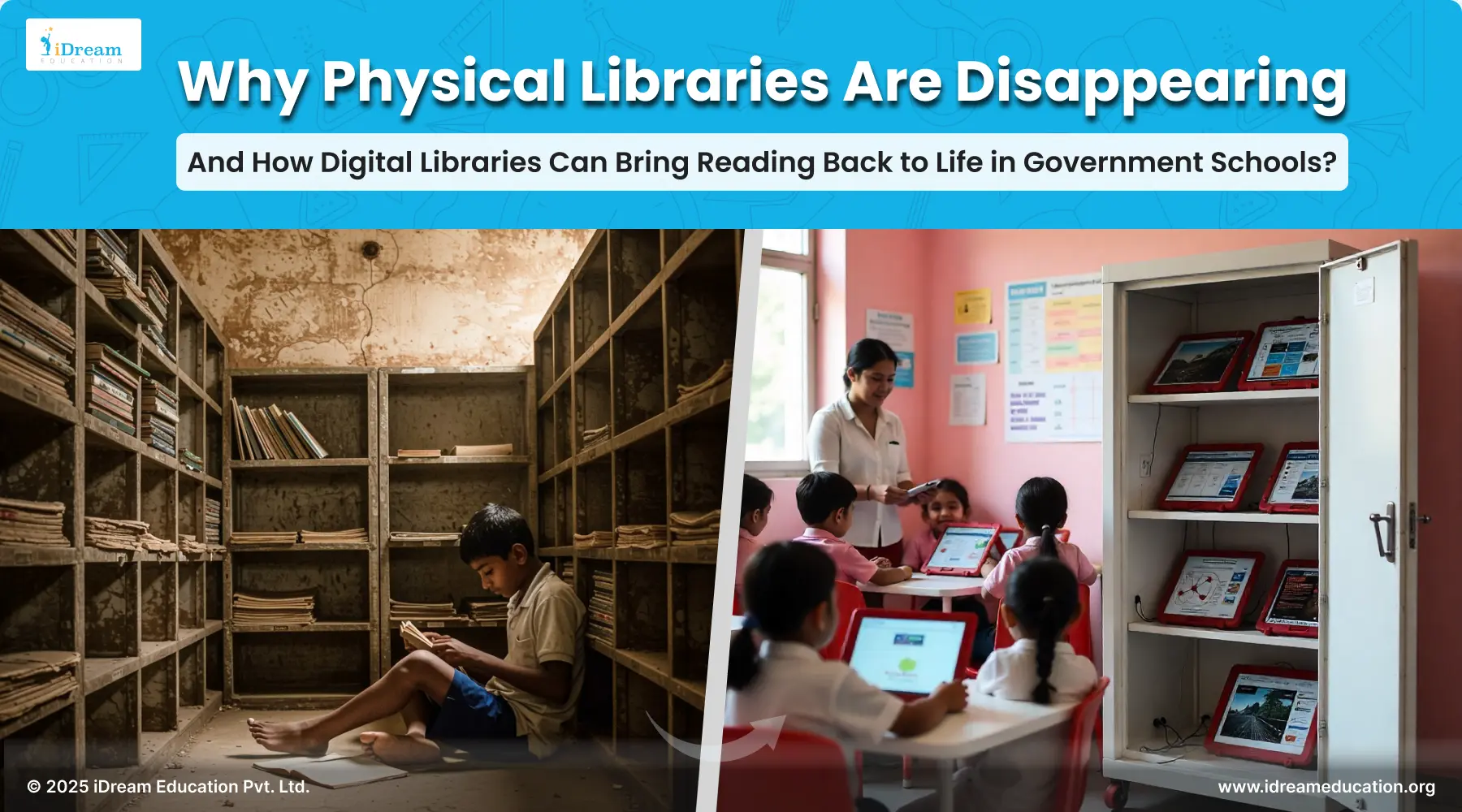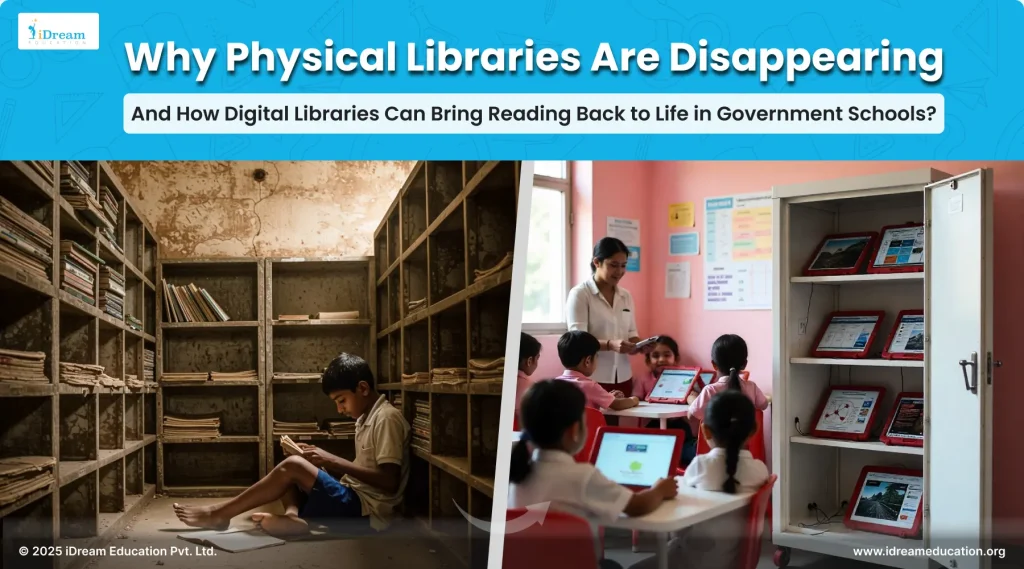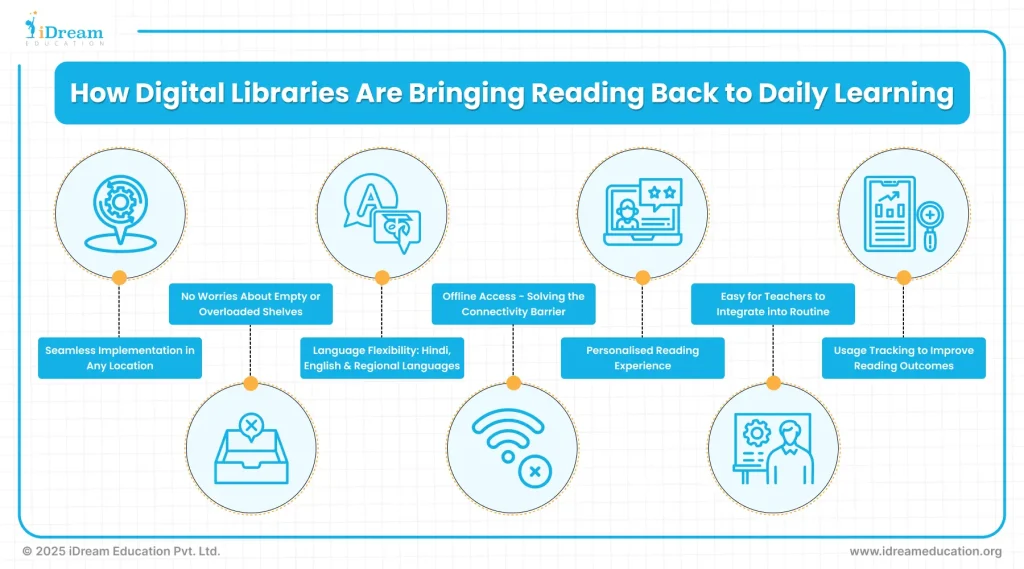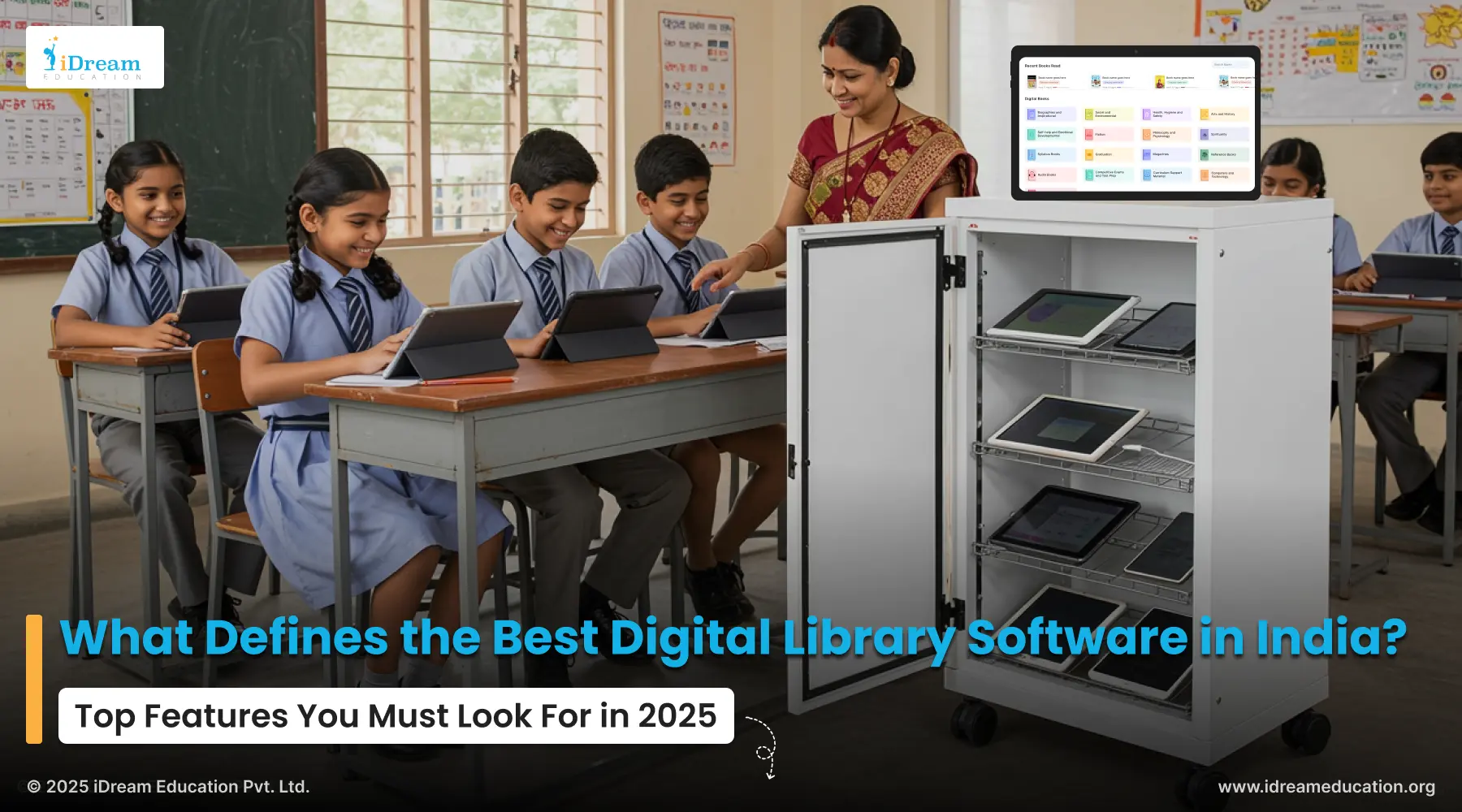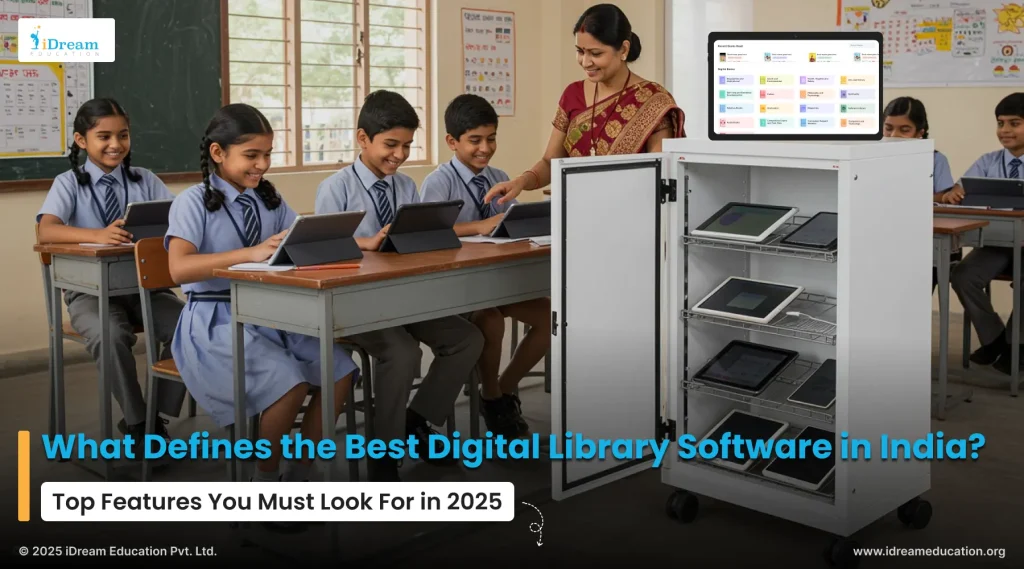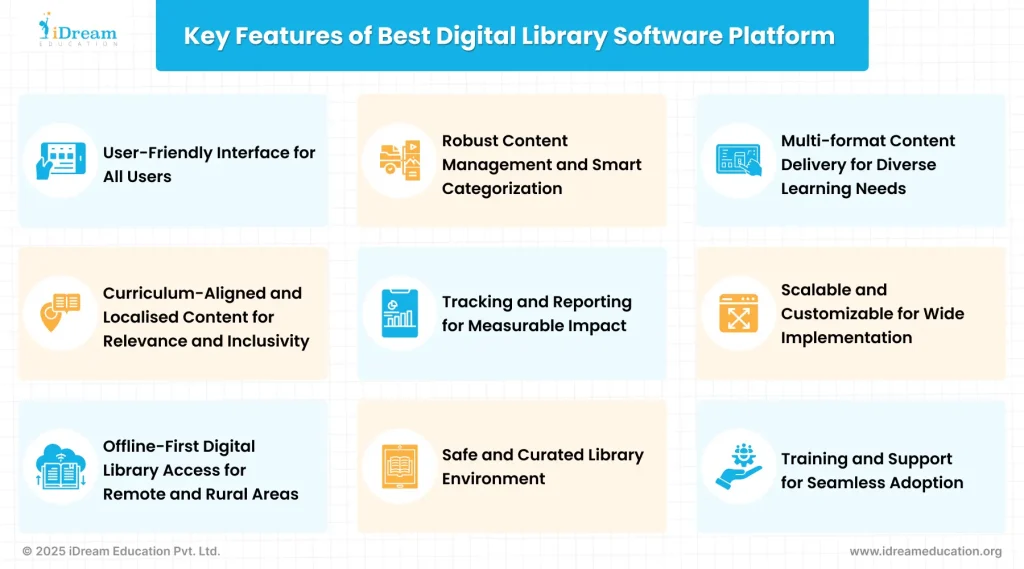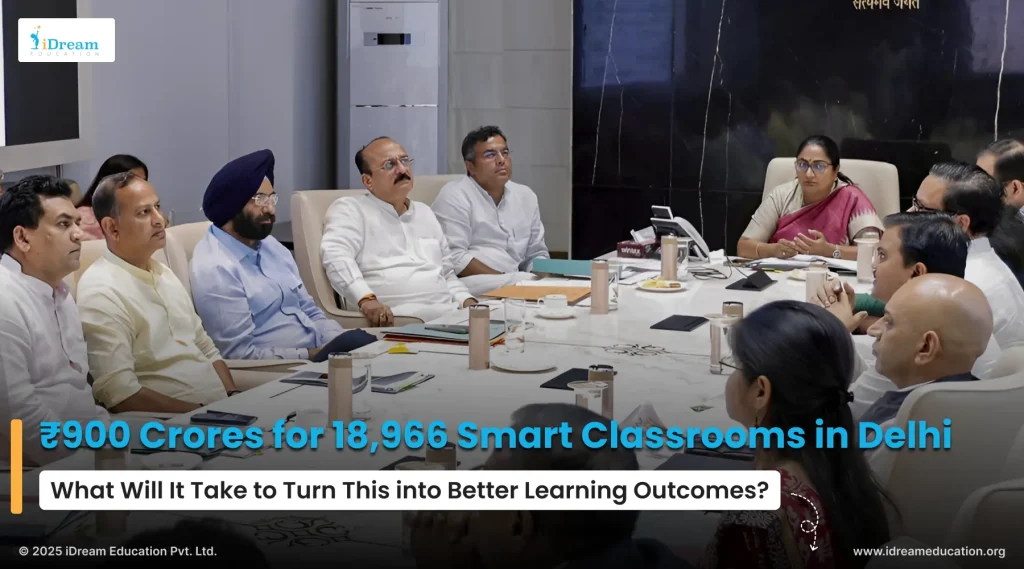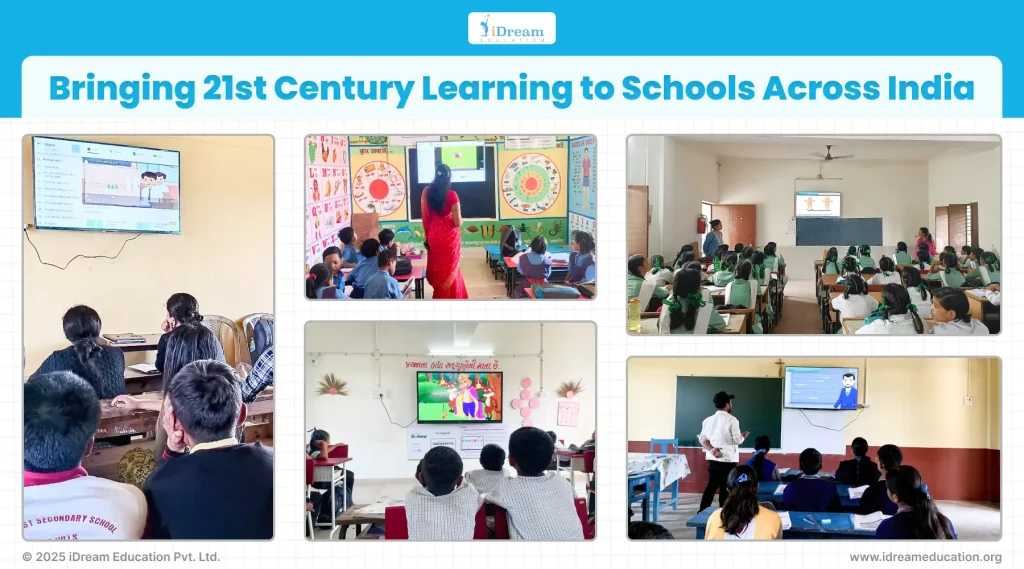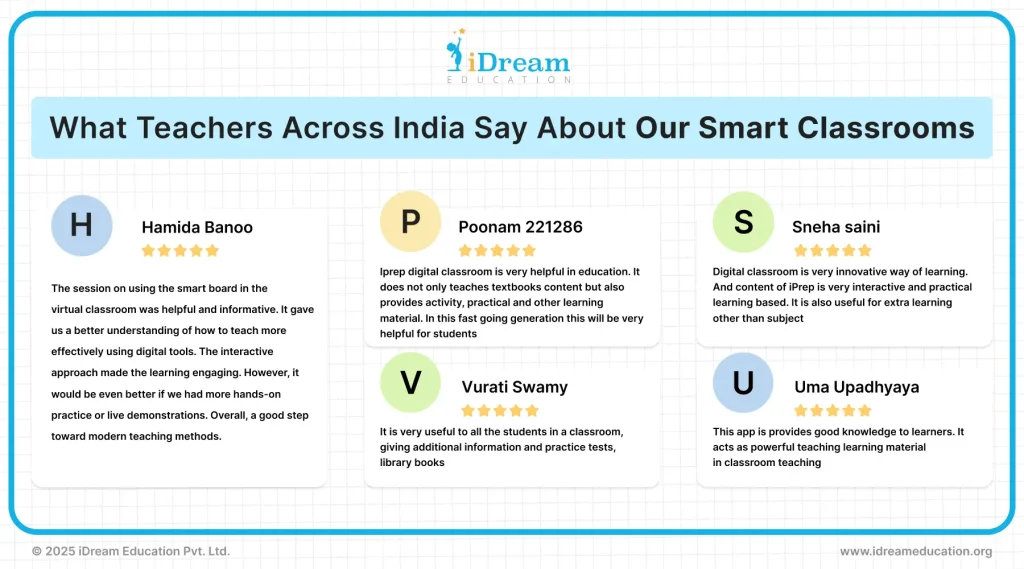Did you know? Post NEP 2020, NCERT has rolled out a massive 1,334 changes across 182 textbooks? Here’s a quick dive into what’s new, what’s the focus and why it matters for students and teachers.
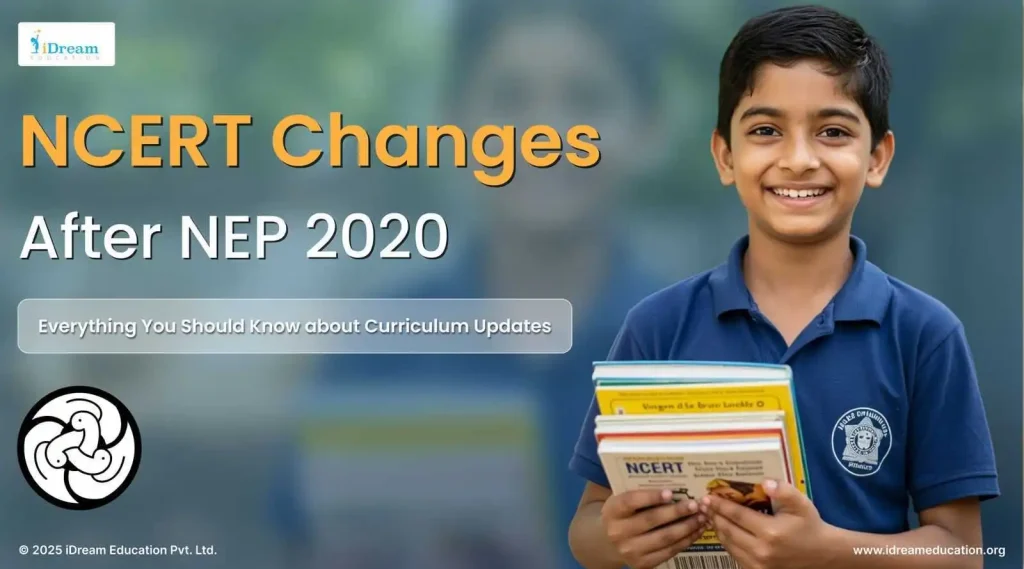
NCERT has long been the backbone of the Indian school curriculum. It is not just a guiding framework for CBSE schools but also as the base for almost all state boards across the country with most SCERTs following NCERT for several Grades. Post-NEP, the education ecosystem has witnessed major shifts in how learning is delivered, enabled, and made more relevant for students, with the curriculum at its very core.
Naturally, this began with a comprehensive revision of NCERT textbooks.
The changes are being implemented based on the new education structure which is 5+3+3+4 and evolving learning needs of students.
When Did NCERT Revisions Actually Start Happening?
The National Council of Educational Research and Training (NCERT) has been revising and updating school textbooks at regular intervals to keep them aligned with the evolving needs of education in India. In line with the vision of the National Education Policy (NEP) 2020, this process has gained renewed momentum in recent years. In fact, since 2014, NCERT has already carried out four rounds of textbook revisions and updates, each aiming to ensure that the curriculum remains relevant, contemporary, and meaningful for learners.
According to NCERT Director Dinesh Prasad Saklani Ji,
- The revision of textbooks is not a one-time reform but a global and annual exercise undertaken in almost all education systems across the world. He highlighted that the changes are guided by subject experts and pedagogy specialists, with a focus on addressing redundancy, including updated knowledge, and reducing the learning burden on students.
- Explaining the nature of these revisions, he pointed out that some changes were made because certain subjects or themes had become outdated or irrelevant. While others were introduced to integrate the latest knowledge and perspectives. A significant round of changes also came during the COVID-19 pandemic, when several topics were temporarily removed to lighten the load on students and to eliminate duplication of content across grades.
With the NEP 2020 now serving as a guiding framework, the ongoing NCERT news on changes outlines that the curriculum is far more comprehensive and future-focused. Now the aim is not only to restructure the content but also to reimagine how students engage with knowledge. This is to make the learning process more holistic, flexible, and responsive to the demands of the 21st century.
Let’s Look at the Major NCERT Changes Happening
Updates in the Social Science Curriculum
- A high-level panel reviewing the Social Science curriculum recommended several significant changes to make the content more relevant and culturally rooted. One key suggestion was to replace ‘India’ with ‘Bharat’ in school textbooks across all classes. NCERT Director Dinesh Prasad Saklani Ji clarified that both ‘Bharat’ and ‘India’ would be used interchangeably, reflecting the terminology used in the Indian Constitution.
- Additionally, the panel, chaired by C I Isaac, proposed replacing the term ‘Ancient History’ with ‘Classical History’ to better capture India’s rich historical legacy.
- Another important recommendation was to integrate the Indian Knowledge System (IKS) across all subjects, emphasizing indigenous knowledge, philosophies, and scientific contributions.
These NCERT changes are aimed at fostering a more holistic understanding of India’s history, culture, and intellectual heritage among students, while aligning the curriculum with the broader goals of NEP 2020.
Revisions in Political Science Textbooks
- The Class 12 Political Science textbooks have undergone notable revisions aimed at restructuring sensitive historical and political content. For instance, the Babri Masjid is no longer directly mentioned; instead, it is referred to as a “three-domed structure.” Several sections dealing with political events and communal tensions have also been removed.
These changes reflect a shift in focus towards a neutral and fact-based presentation of political events, while attempting to streamline content for students and reduce contentious or highly polarized narratives in the curriculum.
Revisions have also extended to history-related political themes
- Recent ancient DNA studies from the Rakhigarhi site in Haryana, which challenge the Aryan migration theory and call for deeper research into links between the Harappan and Vedic people, have influenced textbook content, with certain topics being either dropped or restructured.
- Similarly, a two-page table highlighting the achievements of Mughal emperors including Humayun, Akbar, Jahangir, Shah Jahan, and Aurangzeb has been removed from updated editions.
- Further, the Class 11 Political Science textbook has been revised to include a line suggesting that political parties often prioritize the interests of minority groups with an eye on “vote bank politics,” which, according to the text, leads to “minority appeasement.”
Overall, these changes reflect an attempt to reframe the political narrative in NCERT books, sometimes by simplifying or omitting content, and at other times by presenting issues from a different lens.
Introduction of New Textbooks for Specific Classes
A major step in the NCERT revamp came with the introduction of new textbooks for Classes 3 and 6 in April and May 2024. This marked a crucial milestone in the implementation of NEP-2020, particularly in supporting the smooth transition from the foundational stage to the middle stage of schooling.
- For Class 3, the updated textbooks are designed to promote experiential and activity-based learning, especially in subjects such as Mathematics and Environmental Studies. The focus here is on encouraging curiosity and problem-solving through interactive content, rather than rote memorization.
- In Class 6, the revisions are more wide-ranging and forward-looking. The new curriculum introduces basic coding concepts in Computer Science, ensuring students develop early exposure to computational thinking and digital literacy. Alongside this, Social Science now carries an enhanced focus on Indian heritage, helping learners connect with the country’s cultural and historical depth in an engaging way.
Together, these updates showcase how NCERT is embedding the vision of NEP into practical classroom resources. The aim is to bridge the gap between knowledge and application, and preparing students with both 21st-century skills and a strong sense of cultural grounding. Find more details about NCERT curriculum changes for class 3 and 6 here.
Curriculum Rationalisation and Science Content Updates
Another key aspect of the NCERT revisions has been the curriculum rationalisation process, which began in 2021–2022. This initiative was primarily introduced to reduce the academic burden on students, particularly in the aftermath of the COVID-19 pandemic, when concerns around student well-being and mental health were at their peak. The goal was to streamline textbooks, eliminate repetitive material, and ensure a more manageable and balanced learning load.
- Within this broader exercise, some of the most debated updates have emerged in the Science curriculum. One notable example is the removal of the periodic table from the Class 9 syllabus. While critics argue that this compromises foundational scientific education and may leave gaps in students’ early understanding of chemistry, NCERT has clarified that the topic has not been discarded altogether but has instead been shifted to Class 11. This changed approach aligns better with advanced concepts taught at the senior secondary level.
This reflects NCERT’s broader intent to restructure the sequencing of topics so that learning is age-appropriate, less overwhelming, and logically progressive across grade levels. While the debate continues among teachers, these rationalisation efforts highlight the balancing act NCERT faces between reducing content load for students and maintaining academic rigor in critical subjects such as Science and Mathematics.
Implementation Timeline and Support for Teachers
- The rollout of revised NCERT textbooks is being carried out in phases to ensure smooth adoption across schools. The first milestone came in April 2024, with the release of the updated Class 3 materials. This was followed by the release of Class 6 textbooks in May 2024. Updates for other grades 4, 5,7, 8 are planned to be released in 2025-26. All aligning with the broader NEP 2020 roadmap of gradually restructuring the school curriculum across all stages of learning.
- Recognising that curriculum changes require teacher preparedness. This is why NCERT has also introduced “Bridge Programmes” for teachers. These programmes are being implemented across CBSE schools, Kendriya Vidyalaya Sangathan (KVS), and Navodaya Vidyalaya Samiti (NVS) institutions. The focus is on equipping teachers with the new pedagogical approaches required to deliver experiential, competency-based, and multidisciplinary learning effectively.
By combining phased textbook rollout with professional development initiatives for teachers, NCERT is ensuring that the curriculum revamp is more than new books. It is about a holistic transformation in how education is delivered in classrooms. This dual approach aims to help both students and teachers adjust to the new system with confidence and clarity.
How NEP 2020 Priorities Are Being Integrated into NCERT Curriculum Changes?
The NCERT revisions post-NEP are not happening in isolation, they are deeply rooted in the key priorities of the National Education Policy 2020. This reimagines school education to be more holistic, flexible, and future-oriented. Some of the major focus areas from NEP that are now being reflected in the updated NCERT curriculum include:
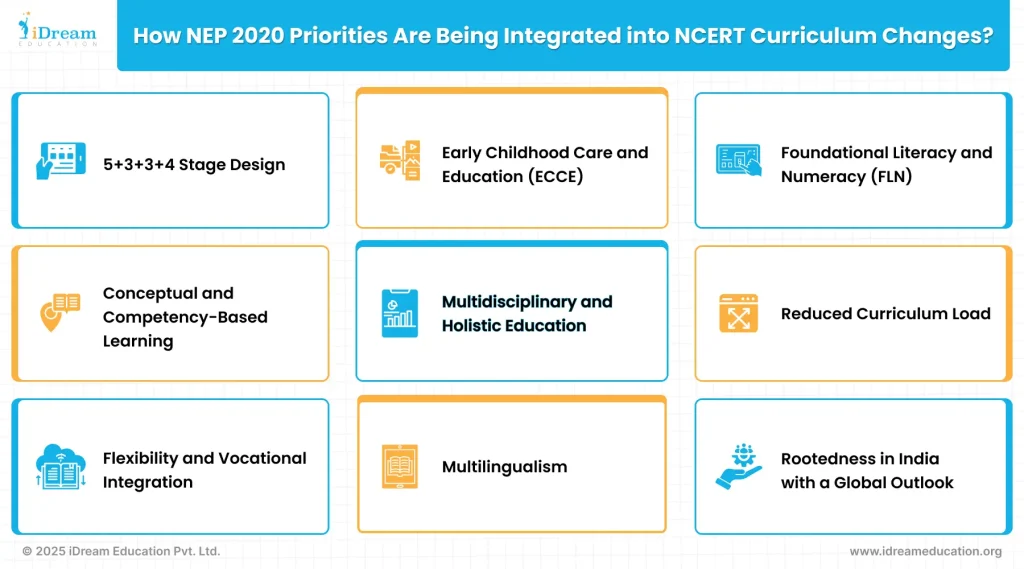
5+3+3+4 Stage Design
The traditional 10+2 structure has been replaced by the 5+3+3+4 model, which recognises the developmental needs of different age groups. NCERT textbooks are now being restructured to align with this framework, ensuring that content, pedagogy, and assessment are age-appropriate and suited to each stage from foundational learning to secondary education.
Early Childhood Care and Education (ECCE)
Recognising the critical importance of early years, NCERT has begun designing materials that integrate play-based, activity-driven learning for the Foundational Stage (ages 3–8). This supports holistic child development and covers cognitive, linguistic, socio-emotional, and motor skills, alongside nutrition and well-being.
Foundational Literacy and Numeracy (FLN)
One of the highest priorities of NEP is ensuring that every child achieves basic literacy and numeracy by Grade 3. NCERT’s new Class 3 textbooks reflect this shift, with more focus on reading, comprehension, and number sense through interactive and activity-based learning and integrating separate module for revision “vidya pravesh”.
Conceptual and Competency-Based Learning
Instead of rote memorisation, the revised curriculum encourages conceptual understanding, critical thinking, creativity, and ethical reasoning. Textbooks now integrate activities, reflective exercises, and real-life applications to build skills and values alongside knowledge.
Multidisciplinary and Holistic Education
Textbooks across subjects are being revised to promote cross-disciplinary connections, for example, linking heritage studies with science, or mathematics with daily life problem-solving. This aligns with NEP’s emphasis on the unity of knowledge and preparing students for a multidisciplinary world.
Reduced Curriculum Load
In line with the NEP’s recommendation, NCERT has streamlined content by removing redundancies and focusing on core essentials. This makes space for deeper exploration, projects, and critical discussions, while also reducing pressure on students.
Flexibility and Vocational Integration
At the secondary stage, the curriculum is gradually shifting to allow greater choice of subjects, including vocational skills, arts, and physical education. NCERT has started introducing these elements in middle school to familiarise students with skill-based and career-oriented learning pathways.
Multilingualism
The new textbooks strongly encourage multilingual learning, reflecting India’s linguistic diversity. The policy promotes proficiency in mother tongue/regional language, while also supporting students to learn multiple Indian and global languages for cognitive and cultural growth.
Rootedness in India with a Global Outlook
NCERT revisions also integrate themes from the Indian Knowledge System (IKS), cultural heritage, and traditional wisdom, while balancing them with modern scientific and global perspectives. This ensures students develop a deep pride in being Indian, while also preparing to be responsible global citizens.
What Do These NCERT Changes Mean for Students and Teachers?
The ongoing NCERT changes, inspired by the vision of NEP 2020, are not just structural or academic updates. They directly impact how students learn and how teachers teach in classrooms. Here are some of the most visible implications:
Inclusion of Modern Schemes and Programs
Textbooks now include references to current national initiatives such as Digital India, Make in India, and Swachh Bharat Abhiyan. This keeps learning relevant and connected to real-world developments, ensuring students grow as more informed and socially aware citizens. For teachers, it provides relatable examples to explain complex socio-economic themes.
Greater Emphasis on Ancient Indian Knowledge
The syllabus integrates Indian Knowledge Systems (IKS) such as Yoga, Ayurveda, and Vedic Mathematics. This not only fosters cultural pride among students but also exposes them to traditional practices that still have practical value today. Teachers now have the opportunity to blend indigenous wisdom with modern pedagogy, creating a more holistic learning experience.
Focus on Nationalist Figures
Freedom fighters and leaders like Veer Savarkar, Subhash Chandra Bose, and Sardar Patel now find greater representation in history and political science lessons. Students gain a wider perspective of India’s independence movement, while teachers can facilitate balanced discussions on contributions that may have been underrepresented earlier.
Reduced Content Load
The rationalisation exercise has trimmed nearly 30% of content across subjects. For students, this means less rote pressure and more time to engage deeply with core concepts. For teachers, it offers the scope to focus on experiential learning, discussions, and projects rather than rushing through the syllabus.
Updated and Future-Ready Content
Revisions also bring in the latest developments from science, technology, and social issues, preparing students for a rapidly changing world. Teachers benefit from having up-to-date material that makes lessons more engaging and ensures alignment with contemporary realities.
Together, these shifts show how NCERT’s curriculum changes are making learning lighter, more relevant, and more connected to both India’s heritage and its future aspirations.
Looking Back: Previous NCERT Syllabus
The current wave of NCERT revisions builds on a series of earlier rationalisation efforts. In 2022, nearly 30% of the NCERT syllabus was removed as part of a major restructuring initiative. This reduction was aimed at easing the academic load on students while keeping the curriculum more focused and streamlined.
As part of this exercise, several sections were either shortened or completely dropped. Notable among these were chapters on the Gujarat riots, Mughal courts, the Emergency, the Cold War, and the Naxalite movement. The intention behind these removals was to avoid content duplication across grades and reduce stress during the post-pandemic years.
Beyond just textbooks, the NCERT also took a significant step by revising the National Curriculum Framework (NCF) in line with the National Education Policy 2020. This process happened after a gap of 14 years. Prior to this, the NCF had been revised only on four occasions: in 1975, 1988, 2000, and 2005. The latest revision seeks to align learning outcomes, pedagogy, and assessments with NEP’s transformative vision for school education.
Embracing NCERT changes in Digital Content
The NCERT curriculum changes post-NEP 2020 represent a bold and future-focused step toward making school education in India more relevant, holistic, and student-centric. From integrating modern government schemes and updated global knowledge to reintroducing ancient Indian wisdom and reducing unnecessary academic load, the NCERT changes have made learning more engaging and meaningful learning experience. They also reflect the evolving priorities of India’s education system, balancing cultural rootedness with global readiness.
At iDream Education, we wholeheartedly applaud these transformative NCERT changes and have been actively working to integrate the revised NCERT curriculum into our digital content.
Our goal is to ensure that schools, teachers, and students across India get seamless access to updated, curriculum-aligned resources. By aligning our content with the latest NCERT revisions, we aim to empower schools with smooth curriculum transitions, provide teachers with ready-to-use, updated material, and enable students to learn from the most relevant and engaging digital resources.
As the education ecosystem continues to evolve under the vision of NEP, we remain committed to supporting this journey. Also, bridging policy with practice and ensuring that learners everywhere can benefit from the richness of India’s updated curriculum.If you’d like to see a demo of our updated digital content aligned with the latest NCERT changes, or learn more about the specific updates we’ve integrated, you may reach out to us at +91 7678265039. You can also share your details here or write to us at share@idreameducation.org

